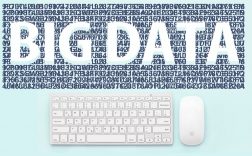Introduction
Big data has revolutionized various industries, and education is no exception. With the advent of technology and the widespread collection of data, educational institutions have started harnessing the power of big data to improve learning outcomes, enhance administrative processes, and optimize decision-making. By analyzing large volumes of data, such as student performance, attendance records, and demographic information, educational institutions can gain valuable insights that drive transformative changes in the field of education.
The integration of big data in education holds great potential to address the diverse challenges faced by teachers, administrators, students, and parents. From personalized learning to student engagement and administrative efficiency, big data analytics can provide a comprehensive understanding of educational systems and pave the way for data-driven interventions and improvements.
Through this article, we will explore the different ways big data is used in education, highlighting its impact on personalized learning, teaching methods, student identification, and more. By harnessing the power of data analytics, educational institutions can shape the future of education and create a more effective and efficient learning environment for all stakeholders.
Enhancing Personalized Learning
In traditional classrooms, teachers are often faced with the challenge of catering to the individual needs of each student. Big data analytics can help address this challenge by enabling personalized learning experiences tailored to each student’s strengths, weaknesses, and learning styles. By analyzing student data, such as test scores, homework completion, and online interactions, educators can gain insights into each student’s progress and make informed decisions to tailor their instruction accordingly.
Through the use of data-driven algorithms, educational platforms can provide personalized recommendations for learning resources, activities, and assessments based on each student’s strengths and areas for improvement. This level of personalization fosters a more engaging and effective learning experience, as students can focus on areas where they need the most support.
Furthermore, big data analytics can identify patterns in student behavior and preferences, allowing educators to create adaptive learning pathways. By tracking how students interact with different types of content and activities, educational platforms can dynamically adjust the learning materials to meet the specific needs and interests of each student. This approach not only enhances learning outcomes but also cultivates a sense of empowerment and ownership in the learning process.
Moreover, big data analytics can facilitate continuous assessment and feedback. By analyzing real-time data, such as quiz results and online discussions, educators can quickly identify areas where students are struggling and provide timely interventions. This targeted feedback helps students stay on track and allows educators to adjust their instructional strategies to maximize learning outcomes.
Overall, the integration of big data analytics in education enhances personalized learning by tailoring instruction to meet each student’s unique needs, preferences, and pace of learning. By leveraging the power of data, educators can create adaptive and engaging learning environments that promote student success and enable lifelong learning.
Improving Teaching and Curriculum Development
Big data analytics in education not only benefits students but also plays a crucial role in enhancing teaching methods and curriculum development. By analyzing a vast amount of data on student performance, educator feedback, and instructional methods, educational institutions can gain valuable insights to improve teaching practices and curriculum design.
One key area where big data analytics can contribute is in identifying effective teaching strategies. By analyzing data on student engagement, outcomes, and feedback, educators can identify the most successful instructional techniques. This information can then be used to guide professional development programs for teachers, helping them refine their instructional methods and stay up to date with the most effective practices.
Additionally, big data analytics can provide educators with valuable information about student learning gaps and misconceptions. By analyzing data on student responses to assessments or quizzes, educators can pinpoint areas where students struggle the most. With this knowledge, curriculum developers can make informed decisions on which topics or concepts to prioritize and how to design instructional materials that effectively address these challenges.
Moreover, big data analytics can contribute to the ongoing evaluation and refinement of educational resources and materials. By analyzing data on resource usage, feedback, and effectiveness, educational institutions can identify which resources are most beneficial to student learning. This data-driven approach ensures that curriculum developers can continuously update and improve the materials used in the classroom, keeping them relevant and aligned with student needs.
Furthermore, big data analytics can assist in identifying gaps in the curriculum or areas where curriculum alignment may be lacking. By analyzing data on student performance, learning outcomes, and standardized assessments, educators and curriculum developers can identify areas where students are consistently struggling. This information can guide the revision of curriculum standards, ensuring that the curriculum is comprehensive and effectively prepares students for future challenges.
Overall, harnessing the power of big data analytics improves teaching and curriculum development by providing valuable insights into effective teaching strategies, student learning gaps, resource effectiveness, and curriculum alignment. By leveraging data-driven insights, educational institutions can optimize teaching methods and curriculum design, resulting in enhanced learning experiences and improved student outcomes.
Identifying At-Risk Students
One of the crucial applications of big data analytics in education is the identification of at-risk students. By analyzing various data points such as attendance records, grades, behavior data, and socio-economic factors, educational institutions can proactively identify students who may be at risk of academic or social challenges.
Big data analytics can help identify patterns and indicators that may indicate a student is at risk. For example, a sudden decline in attendance or a drop in grades could be signs of potential problems. By automating the analysis of these data points, educators and administrators can quickly identify at-risk students and implement targeted interventions.
Furthermore, big data analytics can identify factors contributing to student disengagement or low academic performance. By exploring the correlations between different data points, such as attendance, disciplinary actions, and academic performance, patterns and risk factors can be identified. This information enables educators to develop targeted interventions and support systems to address the underlying causes and help at-risk students succeed.
Moreover, big data analytics can assist in predicting dropout rates. By analyzing historical data on student performance, behavior, social interactions, and external factors, institutions can develop predictive models to identify students who may be at high risk of dropping out. Early identification allows for timely interventions, such as counseling or additional support services, to be provided to prevent or mitigate potential challenges.
Additionally, big data analytics can help identify students who may benefit from targeted academic or socio-emotional support programs. By analyzing data on students’ learning styles, interests, and personal circumstances, educational institutions can tailor support programs to meet the specific needs of at-risk students. This personalized intervention approach increases the likelihood of successful outcomes and helps prevent students from falling through the cracks.
Overall, big data analytics plays a critical role in identifying at-risk students by examining various data points and detecting patterns and risk factors. By utilizing this information, education systems can implement proactive measures and targeted interventions to support at-risk students, improving their chances of academic success and overall well-being.
Enhancing Administrative Processes
Big data analytics has the potential to revolutionize administrative processes in educational institutions, streamlining operations, improving efficiency, and enabling data-driven decision-making. By harnessing the power of data, administrators can optimize resource allocation, enhance communication, and ensure effective management of various administrative tasks.
One key area where big data analytics can enhance administrative processes is in resource allocation. By analyzing data on student enrollment, class sizes, and teacher availability, educational institutions can efficiently allocate resources such as classrooms, teaching materials, and staff. This data-driven approach ensures that resources are utilized optimally, minimizing wastage and maximizing the quality of education provided.
Moreover, big data analytics can improve communication between different stakeholders within the educational ecosystem. By analyzing data on parent communications, student interactions, and teacher feedback, administrators can identify areas for improvement and implement strategies to enhance communication channels. This leads to better collaboration and engagement among teachers, students, parents, and administrators.
Additionally, big data analytics can optimize administrative tasks such as scheduling, timetabling, and student enrollment. By analyzing historical data on class schedules, student preferences, and teacher availability, institutions can create efficient and balanced timetables that meet the needs of students and teachers. Furthermore, data analytics can also aid in predicting student enrollment patterns, enabling administrators to anticipate demand and allocate resources accordingly.
Furthermore, big data analytics can contribute to the identification of inefficiencies and bottlenecks in administrative processes. By analyzing data on workflows, documentation, and response times, administrators can identify areas for improvement, streamline processes, and reduce administrative burdens. This leads to increased productivity and a more efficient management of administrative tasks.
Big data analytics also enables data-driven decision-making at the administrative level. By analyzing data on school performance, student outcomes, and resource utilization, administrators can make informed decisions regarding curriculum changes, budget allocations, and policy development. This data-driven approach ensures that administrative decisions are based on objective evidence rather than assumptions or personal biases.
In summary, the integration of big data analytics in administrative processes enhances resource allocation, improves communication, optimizes administrative tasks, and enables data-driven decision-making. By leveraging the power of data, educational institutions can streamline operations, improve efficiency, and create a more effective and responsive administrative system.
Improving Educational Research and Policy-making
Big data analytics has revolutionized the field of educational research and policy-making by providing researchers and policymakers with access to vast amounts of data that can inform evidence-based decisions. By analyzing large datasets, researchers can gain valuable insights into educational trends, student performance, and the effectiveness of various interventions.
One way big data analytics improves educational research is through data-driven research design. Researchers can use large-scale datasets to explore research questions and generate hypotheses. Analyzing data on student demographics, achievement levels, and other variables allows researchers to uncover patterns, correlations, and trends that can inform their research design and methodology.
Furthermore, big data analytics enables researchers to conduct longitudinal studies. By accessing historical data on student outcomes, researchers can track educational trajectories over time and evaluate the long-term impact of interventions. This longitudinal perspective provides a deeper understanding of educational processes and outcomes, enhancing the quality and validity of research findings.
In addition to enhancing research, big data analytics also plays a crucial role in policy-making. By analyzing data on educational outcomes, resource allocation, and socio-economic factors, policymakers can identify areas of improvement and develop targeted interventions to address educational inequalities and challenges.
Moreover, big data analytics can aid in the evaluation and monitoring of educational policies. By analyzing data on policy implementation and its impact on student performance, policymakers can assess the effectiveness of different initiatives and make data-driven adjustments. This iterative approach ensures that policies are evidence-based and responsive to the needs of students and educational institutions.
Additionally, big data analytics allows for more precise targeting of resources and interventions. By analyzing data on student demographics, performance, and socio-economic factors, policymakers can identify specific subgroups that may require additional support or interventions. This targeted approach helps allocate resources more effectively and ensures that interventions are tailored to the needs of the student population.
Overall, big data analytics has transformed educational research and policy-making by providing researchers and policymakers with unprecedented access to rich and diverse datasets. By analyzing this data, researchers can generate insights and conduct rigorous studies, while policymakers can develop evidence-based policies and interventions. This integration of big data analytics in educational research and policy-making leads to more informed decisions and improved educational outcomes for students.
Leveraging Predictive Analytics
One of the most powerful applications of big data analytics in education is predictive analytics. By analyzing large volumes of data, educational institutions can leverage predictive analytics to anticipate future outcomes and make proactive decisions to improve student outcomes and institutional effectiveness.
Predictive analytics can be used to forecast student performance and identify students who may need additional support. By analyzing historical data on student grades, attendance, and engagement, educational institutions can develop predictive models that identify students who are at risk of falling behind academically. This allows educators to intervene early and provide targeted interventions to support struggling students before they experience significant setbacks.
In addition to individual student performance, predictive analytics can also be used to forecast larger trends and patterns. By analyzing data on school demographics, funding levels, and other variables, educational institutions can anticipate future challenges and plan accordingly. This allows for proactive decision-making in areas such as resource allocation, program development, and policy implementation.
Furthermore, predictive analytics can help educational institutions optimize their strategic planning processes. By analyzing data on historical student enrollment trends, employment market demand, and societal changes, institutions can make data-driven decisions regarding program offerings and curriculum development. This ensures that institutions are aligned with emerging trends and can effectively prepare students for future career opportunities.
Predictive analytics also plays a crucial role in educational finance and budgeting. By analyzing data on enrollment, revenue, and expenses, institutions can develop accurate financial forecasts and make informed decisions regarding budget allocations. This helps optimize resource utilization, mitigate financial risks, and ensure the long-term sustainability of educational institutions.
Moreover, predictive analytics can aid in identifying factors that contribute to student success. By analyzing data on student characteristics, demographic information, and academic performance, educational institutions can identify the most influential factors in student achievement. This knowledge can inform the development of targeted support programs and interventions to enhance student success.
In summary, predictive analytics enables educational institutions to anticipate future outcomes and make proactive decisions. From identifying at-risk students to forecasting trends and optimizing resource allocation, predictive analytics empowers educational institutions to take data-driven actions that enhance student outcomes and overall institutional effectiveness.
Enhancing Student Engagement and Motivation
Big data analytics plays a crucial role in enhancing student engagement and motivation in educational settings. By analyzing various data points related to student behavior, interests, and academic performance, educational institutions can develop strategies to foster student engagement and motivation, ultimately improving overall learning outcomes.
One way big data analytics enhances student engagement is by personalizing learning experiences. By analyzing data on student preferences, learning styles, and past performance, educational institutions can tailor learning materials and activities to align with each student’s individual needs. This level of personalization makes learning more relevant and meaningful, increasing student engagement and motivation.
Additionally, big data analytics can provide real-time feedback to students, enabling them to monitor their progress and adjust their learning strategies accordingly. By analyzing data on assessments, quizzes, or practice exercises, educational platforms can provide immediate feedback on areas where students excel and areas where they may need additional support. This feedback loop helps students stay engaged and motivated by offering guidance and allowing them to track their progress.
Moreover, big data analytics can facilitate the creation of interactive and gamified learning experiences. By analyzing data on student interactions, preferences, and performance, educational platforms can develop immersive and engaging learning environments. Gamification elements, such as leaderboards, badges, and rewards, can be incorporated to increase motivation and create a sense of achievement among students.
Furthermore, big data analytics can assist educators in identifying students who may be disengaged or at risk of losing motivation. By analyzing data on student attendance, participation, and interactions, educators can proactively intervene and provide targeted support to keep students engaged. This may involve personalized counseling sessions, mentorship programs, or additional resources to reignite students’ motivation and enthusiasm for learning.
In addition, big data analytics can help educators identify factors that impact student engagement and motivation. By analyzing data on factors such as class size, teaching methods, and student feedback, educational institutions can make data-driven decisions to optimize the learning environment. This may involve adjusting class sizes, implementing innovative teaching techniques, or creating supportive and inclusive classroom environments.
In summary, big data analytics enhances student engagement and motivation through personalized learning experiences, real-time feedback, gamification, early identification of disengagement, and optimization of the learning environment. By leveraging the power of data, educational institutions can create dynamic and stimulating learning environments that foster student engagement and enhance motivation, ultimately leading to improved learning outcomes.
Addressing Student Dropout Rates
Big data analytics is a powerful tool in addressing student dropout rates, one of the major challenges faced by educational institutions. By analyzing various data points and identifying risk factors, educational institutions can implement targeted interventions to support at-risk students and increase their chances of staying in school.
One way big data analytics helps address student dropout rates is by identifying early warning signs. By analyzing data on attendance, grades, behavioral records, and other variables, educational institutions can develop predictive models to identify students who are at risk of dropping out. This early identification allows for timely interventions, such as counseling, mentoring, or additional academic support, to be implemented before students reach a critical stage.
Additionally, big data analytics can help educators and administrators understand the underlying reasons for dropout. By analyzing data on student surveys, school climate, and other factors, institutions can identify the root causes of student disengagement and dropout. This knowledge can inform the development of targeted interventions to address specific challenges, such as implementing programs to improve school climate or providing additional resources for students facing socio-economic barriers.
Moreover, big data analytics can assist in monitoring and tracking student progress. By analyzing data on student attendance, credits earned, and academic performance, institutions can monitor students’ progress towards graduation and identify potential barriers or gaps in support. This data-driven monitoring allows for timely intervention and support to keep students on track towards graduation.
Furthermore, big data analytics can help personalize interventions based on individual student needs. By analyzing data on student demographics, interests, and academic performance, educational institutions can tailor support programs to address the specific challenges faced by individual students. This personalized approach increases the effectiveness of interventions and reduces the likelihood of dropout.
In addition to individual interventions, big data analytics can enable educational institutions to measure the impact of broader interventions and policies aimed at reducing dropout rates. By analyzing data on program implementation, outcomes, and student performance, institutions can assess the effectiveness of interventions and make data-driven adjustments to improve outcomes.
In summary, big data analytics plays a crucial role in addressing student dropout rates by identifying early warning signs, understanding reasons for dropout, monitoring student progress, personalizing interventions, and evaluating the impact of interventions. By leveraging the power of data, educational institutions can create a supportive and inclusive environment that increases student retention and success, ultimately reducing dropout rates.
Enhancing Parental Involvement
Big data analytics has the potential to significantly enhance parental involvement in the education of their children. By providing parents with access to real-time data, insights, and communication channels, educational institutions can foster collaboration between parents and educators, leading to improved student outcomes and overall educational experience.
One way big data analytics enhances parental involvement is through the use of parent portals or dashboards. By analyzing data on student attendance, grades, assignments, and behavior, educational institutions can provide parents with a comprehensive view of their child’s academic progress. This real-time access to information allows parents to stay informed about their child’s performance and overall engagement in school.
In addition to access to data, big data analytics can also provide parents with personalized recommendations and resources. By analyzing data on student performance, learning styles, and interests, educational platforms can offer tailored suggestions for supporting their child’s education. This may include recommending relevant study materials, educational apps, or extracurricular activities that align with their child’s interests and needs.
Furthermore, big data analytics facilitates effective communication between parents and educators. By analyzing data on parent-teacher interactions, student progress, and feedback, educational institutions can identify potential areas for improvement in communication channels. This can lead to the development of more efficient communication platforms, such as mobile apps or online portals, that enable timely and meaningful parent-teacher engagement.
Moreover, big data analytics can provide parents with insights into their child’s strengths, weaknesses, and learning preferences. By analyzing data on student assessments, project work, and individualized learning pathways, parents can gain a deeper understanding of their child’s learning journey. This knowledge enables parents to provide targeted support and encouragement, fostering a collaborative relationship between parents, educators, and students.
Additionally, big data analytics can enable parents to actively participate in the decision-making process regarding their child’s education. By analyzing data on school policies, curriculum options, and extracurricular activities, educational institutions can involve parents in important decisions that affect their child’s educational experience. This collaborative approach promotes a sense of ownership and involvement, ultimately leading to improved student outcomes.
In summary, big data analytics enhances parental involvement by providing access to real-time data, personalized recommendations, improved communication channels, insights into student performance, and opportunities for participation in educational decision-making. By leveraging the power of data, educational institutions can foster collaborative partnerships between parents and educators, ensuring that students receive the necessary support and guidance for educational success.
Conclusion
The integration of big data analytics in education has the potential to revolutionize the way we teach, learn, and manage educational systems. By leveraging the power of data, educational institutions can enhance personalized learning, improve teaching methods and curriculum development, identify at-risk students, streamline administrative processes, inform educational research and policy-making, leverage predictive analytics, enhance student engagement and motivation, address student dropout rates, and enhance parental involvement.
Through personalized learning experiences, big data analytics enables educators to tailor instruction to meet the unique needs of each student, resulting in improved learning outcomes and increased student engagement. It also empowers educators to refine their teaching methods and develop effective curriculum based on data-driven insights, ultimately optimizing the learning experience for students.
Furthermore, big data analytics aids in identifying at-risk students at an early stage, allowing for timely interventions and support. By analyzing data, educational institutions can also optimize administrative processes, enhance resource allocation, and improve communication between stakeholders. This increases efficiency and productivity while facilitating data-driven decision-making at the administrative level.
Big data analytics also plays a crucial role in educational research and policy-making by providing researchers with access to large datasets and enabling evidence-based decision-making. Predictive analytics allows institutions to anticipate future outcomes, while enhanced student engagement and motivation foster a positive and effective learning environment.
By addressing student dropout rates, educational institutions can improve student retention and success. Big data analytics provides insights into the reasons for dropout, identifies at-risk students, and facilitates targeted interventions to keep students on track towards graduation. Additionally, big data analytics enhances parental involvement by providing real-time data access, personalized recommendations, and improved communication channels between parents and educators.
In conclusion, big data analytics has the potential to transform education by harnessing the power of data to inform decision-making, enhance learning experiences, improve student outcomes, and create a more inclusive and dynamic educational ecosystem. The integration of big data analytics in education is a monumental step towards creating a more effective, personalized, and equitable education system for all students.

























